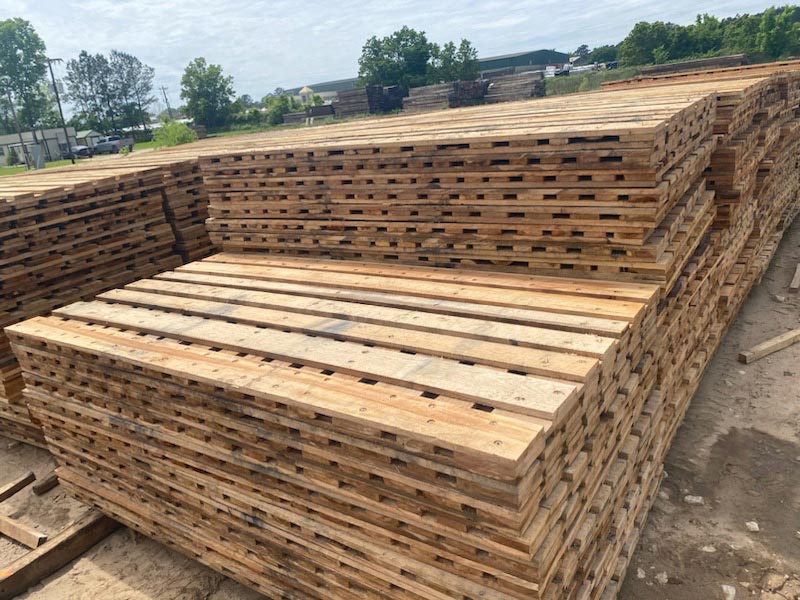Mats for ground protection are invaluable tools in the construction and industrial sectors. They provide essential support for heavy machinery, preventing soil erosion, and enhancing worksite safety. These mats are like sturdy shields that keep the ground underneath safe from getting damaged by heavy equipment. They come in different types, so you can choose the ones that work best for your specific needs. This article talks about the various aspects of these ground protection mats. It examines their composition and design considerations and offers expert tips for selecting the ideal mats to safeguard your worksite.
How Ground Protection Mats Work?
Ground mats are built strong to handle heavy stuff, spread the weight out, and keep the ground underneath safe. Knowing how they work scientifically helps you make smart choices when picking the right mats for your project.
Material Composition
Protection mats come in two main materials: High-Density Polyethylene (HDPE) and composite materials. HDPE mats are super strong and long-lasting, perfect for tough jobs. On the flip side, composite mats are made by mixing different materials to find the right balance between strength and weight. This makes them great for various types of projects.
The use of HDPE in mat construction ensures remarkable durability, allowing these mats to withstand substantial weight and harsh environmental conditions. This material’s resistance to wear and tear is essential for protecting your worksite and prolonging the lifespan of the mats.
Weight Distribution
Protection mats are designed with a strategically placed grid pattern on their undersides. This grid pattern distributes the weight of heavy machinery evenly, reducing the impact on the ground beneath. This innovative design minimizes ground pressure, which is essential for protecting fragile terrain, such as wetlands or soft soils.
The grid pattern isn’t just a simple aesthetic feature. No, it’s a critical element that ensures uniform weight distribution. By preventing excessive ground pressure, these mats help prevent soil compaction and damage to the underlying terrain.
Traction and Slip Resistance
Slippery surfaces can pose a significant hazard on construction sites. Protection mats often feature textured surfaces to provide enhanced traction and slip resistance, ensuring the safety of both machinery operators and on-site personnel.
Putting slip-resistant textures on these mats is a wise safety choice. It reduces the risk of accidents, especially in areas prone to mud, snow, or rain, where keeping your balance is really important.
Design Considerations for Protection Mats
Selecting the appropriate protection mats requires careful consideration of various design factors. Some of those are mentioned below.
Size and Dimensions
Make sure the protection mats you pick match the size of your machines and the part of your worksite you want to protect. They should cover the whole space where your equipment sits so that the weight is spread out evenly. Selecting the right size and dimensions for your mats makes sure they cover everything and prevent any strain on the ground.
Thickness
The thickness of protection mats varies, and the choice depends on the intended application. Thicker mats are suitable for projects requiring higher load-bearing capacity. Thinner mats may suffice for lighter equipment. Tailoring the thickness of your mats to the specific equipment and loads involved in your project optimizes their performance and ensures long-term durability.
Connection Mechanisms
Certain protection mats come with special interlocking parts or connectors that let you connect them together securely. This makes sure they stay in place and don’t move around when you’re using them. Interlocking mats are great because they create a smooth surface without any gaps, which is especially important when you’re dealing with big machines.
Environmental Compatibility
Think about the environment where you’re working. If it’s a place that’s important for nature, choose mats that are made to be gentle on the ground and protect fragile ecosystems. Using mats that are specifically designed to be gentle on the ground is crucial for keeping the natural environment safe and lessening the harm from construction or industry work.
Tips for Choosing Ground Mats
Here are some practical tips to help you make an informed choice:
Assess Your Project Needs
Start by assessing your project’s unique needs. Think about things like the kind of machinery you’ll use, the terrain, and any environmental concerns. This evaluation will help you choose the right approach.
Weight-Bearing Capacity
Determine the maximum weight that the protection mats need to support. Ensure that the mats you choose can handle the heaviest machinery and equipment on your worksite. Knowing the weight-bearing capacity of your mats is essential to prevent overloading and potential mat failure, which could lead to accidents or site damage.
Terrain Analysis
Conduct a thorough analysis of the terrain to identify potential challenges. Soft soils, wetlands, and uneven surfaces may require specialized mats with superior weight distribution capabilities. Understanding the characteristics of the terrain helps you select mats that can effectively distribute weight and protect the ground beneath.
Ground protection mats are not just practical tools. They are engineered solutions designed to safeguard your worksite, protect the environment, and ensure the safety of personnel. Remember that each project is unique, and selecting the right mats is a critical step toward its successful completion.





